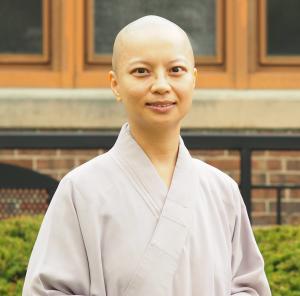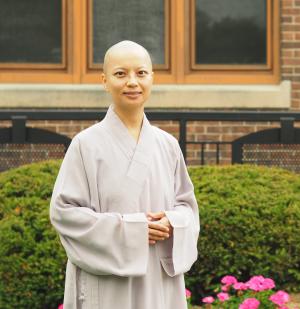Resources by Dixuan Yujing Chen

One of my courses is a first-year tutorial designed to fit in with the college-wide objectives to develop new students’ basic academic skills, including writing, critical reading, and oral communication. It also involves individually advising new students to navigate their learning journey until they declare their major field of study. Because the course has multiple goals, it took me a long time to think about an appropriate topic to connect college students’ academic success with their personal lives. I also facilitate students’ embodied learning in their first year. What strategies can I teach them that will enhance their learning progress while adjusting to a new school environment.When designing my course, I found Tammy J. Freiler’s view of being attentive to the entire body as a way of whole-person learning to be helpful. She argues that embodiment is an approach “to construct knowledge through direct engagement in bodily experiences and inhabiting one’s body through a felt sense of being-in-the-world…. It also involves a sense of connectedness and interdependence through the essence of lived experiencing within one’s complete humanness, both body and mind, in perceiving, interacting, and engaging with the surrounding world.”[1] The statement of “complete humanness” inspired my tutorial course topic, “Mindfulness: The Art of Living,” in which I guide students to develop a sense of physical and mental awareness.This is not a meditation course. Instead, the class uses mindfulness as a subject of study. Students study Jeff Wilson’s Mindful America (Oxford, 2014) to build reading, writing, and presentation skills. They also learn how to evaluate the credibility of online resources. While I guide students to take an active role in learning and exploring their academic interests, I encourage them to incorporate mindful practices into their professional performance and everyday life. Teaching the tutorial not only helps me critically reflect upon how to develop a more holistic view of education, but also makes it clear that the traditional approach to teaching mindfulness focuses primarily on the mental aspect, which creates some pitfalls. Although establishing mind-body interaction is the goal, it is easy to neglect the living body as a medium for knowing and connecting with the surrounding world. Several questions and challenges arise, and I have learned at least two noteworthy points about embodied learning. Providing practice-based learning opportunities is not enough. Active engagement is the key to triggering embodied experiences. This notion is too obvious to be overlooked. My first day teaching this class was a bit challenging, in part because it was ironic to guide a discussion about “mindfulness” when students were sleepy. The class started at 8:00 am, a time when young learners felt a lack of energy. Attempting to address this, I added two-minutes of mindful listening (to the natural sounds of birds singing or forest stream), combined with three minutes of relaxing body movement. In theory, this should have been beneficial and meaningful. Some students, however, did not find it useful. Why? The critical element is engaging with the doing and being immersed in the activity. It takes practice to hone one’s mindfulness and cognition. Students cannot gain any constructive effects unless they develop exactly their own whole-body practice, bringing sensory organs and the mind together.Learning space matters, but students may not be mindful of their interactions with the external world. Being at a residential college, all full-time students are required to live on campus, thus there are very few clear boundaries between living and studying spaces. How can I help students develop their bodily awareness in academic environments and beyond? I ask students to write a journal to observe their study habits and in what ways they learn the best. The main concern is whether their bodily activities are related to a learning task in a meaningful way, or not. In addition, I have them pay attention to where the most effective locations that enhance their productivity are, to help students think about how environments affect their cognitive process. Some students report locations where they feel less anxious while doing homework, including the Spencer Grill (a café), the atrium at the Human and Social Studies Center, and outdoors. None of them mention their dorm rooms. Students’ reflections are meaningful, as they develop their bodily awareness on campus, acknowledge the body as a basis for their being in the world, and create a personal connection with their surroundings. Teaching first-year students about mindfulness allows me to reflect that learning involves embodied cognition. Although most agree that mindfulness is a practical approach to dealing with day-to-day issues, not everyone values the importance of being attentive to the body. They tend to take their physical presence for granted, and aren’t aware of body experiences as a way of knowing. Thus, it is my responsibility to guide students to develop cognitive awareness, which can subsequently help them appreciate mind-body integration as a powerful tool to enhance productive learning. [1] Tammy J. Freiler, “Learning Through the Body.” New Directions for Adult and Continuing Education 119, (2008): 40, DOI: 10.1002/ace.304.

From a broader aspect, school closure during the outbreak of the Coronavirus pandemic created a crisis in the global history of education. But, personally, this crisis brought about opportunities, and the pros outweighed the cons. When classes moved online, the unexpected challenges of educational disruption inspired me—more precisely, forced me—to have a critical reflection on what exactly multimodal communication means in higher education. This unique moment also made me rethink how and why physical interactions play a critical role in the process of learning. These in-depth reflections have reshaped my teaching styles and pedagogical skills, especially in my Zen Buddhism course. The lack of physical interactions during the campus closure created more devastating impacts on my Zen Buddhism class than on my other courses. This intermediate-level class guides students to learn thoughts and practices related to mind cultivation in Buddhist meditation traditions in China, Japan, and the United States. I faced a challenging task: students mainly focused on pursuing “good grades” rather than connecting their learning to the real world. Without classroom engagement, students ended up memorizing knowledge rather than developing insights. This issue is worth seriously considering for instructors. I realized that providing students with opportunities for firsthand experience is more significant than teaching them theories described in textbooks or PowerPoint slides. When we returned to the normative classroom-based environment after the pandemic, I redesigned my course syllabus and included a tea ritual to boost students’ engagement. This change aims to stimulate cognitive abilities and develop a sense of self-awareness. Lesson Plan: Students are divided into five groups. Each group selects a “host” to make tea, and other members become the “guests” who experience mindful tea drinking. I explain the procedure of tea making and each student takes turns practicing the etiquette of a “host” who serves tea. Students are required to observe their physical and mental states during the entire process. After the tea ceremony, each group discusses why tea drinking is a type of mind cultivation and whether the ritual can evoke peace and awareness. The questions that students discuss include: How does tea drinking bring about sensory awareness of the whole person (smell, vision, taste, and feeling cold or warm)? Why and how does tea drinking denote a “healing journey” from a personal aspect? How is tea making as the subject of concentration be unique, when compared with mediation? How is tea drinking in the Zen tradition different from other types of drinking culture (for example, coffee)? During the discussion, I reduce my input to eliminate the “authoritative” voice and remind students that it’s their time to share their self-discovery, which is beyond right or wrong answers. Here is what I have learned from students’ feedback. Students rediscover their sense of awareness: While comparing tea drinking with meditation, most students respond that the concentration produced by meditation is too subtle to detect. But drinking a cup of tea can stimulate multiple sensations such as smell, taste, and physical feeling. Because tea is visible, touchable, and noticeable, students feel it is easier to bring their mind and body together. Students said that they are able to perceive the whole body as a learning tool. Through the integration of physical engagement in learning, students acknowledge that bringing body and mind together is the key to producing insights. Limitation of language: When students discuss and share their feelings, they find out that language has certain limitations and their sensations and states of mind are ineffable and beyond language. Some students struggle to find words to express their feelings. A student said that seeing the world through the lens of “ritual” is very distinct from that of “textbook.” All students agree that this activity diversifies their learning resources and supports other modes of learning such as reading or writing papers. Daily activities create opportunities for spiritual cultivation: This activity enables students to extend the tea-drinking experience to reflect on their other daily routines. Students report that a five-minute tea drinking is a doable and manageable daily opportunity for stress reduction. Students also mention that the quiet moment is a time of mental purification, and they hope to create more occasions to do so. A student suggests that the college should consider providing free tea ceremonies at quiet locations around campus to improve student self-awareness and relaxation during break time, especially the midterm and final exam week. This teaching experience is meaningful and rewarding because I see smiles on students’ faces.